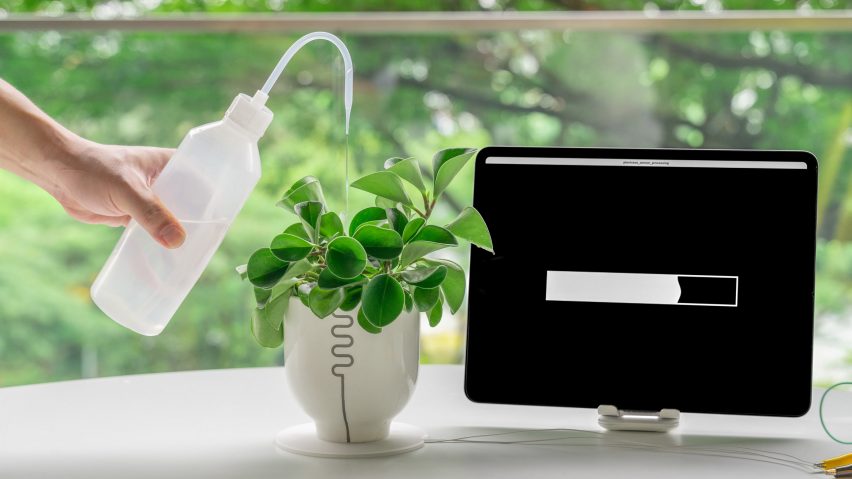
Clement Zheng's conductive ceramics can control sound and sense moisture
Designer Clement Zheng has created a collection of conductive ceramics that can heat food, act as interfaces for smart devices and sense moisture.
Zheng, who developed the concept with a team of researchers at the National University of Singapore including designer Hans Tan, said he drew on the idea of computation interacting with daily life to create pieces that would be helpful in everyday situations.
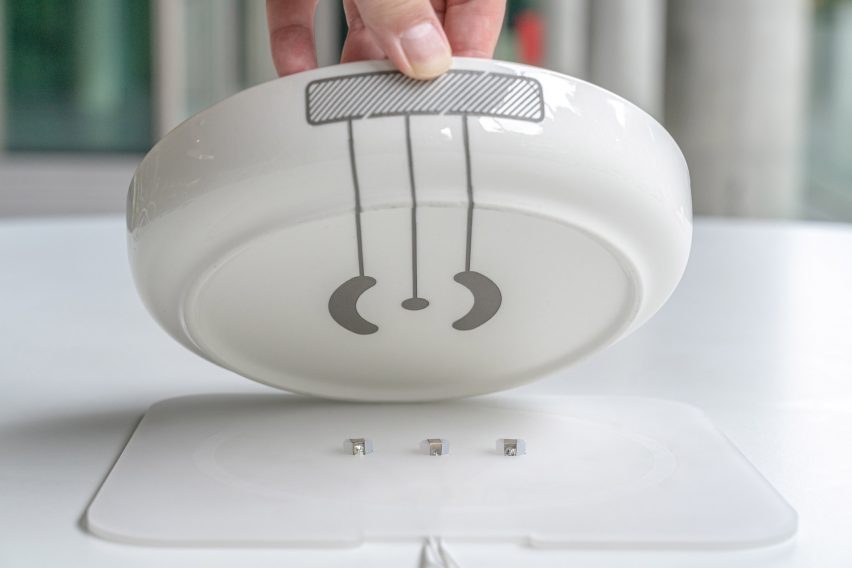
"We were inspired by the Internet of Things and wanted to investigate how 'smart' objects can be embedded into everyday life," Zheng told Dezeen.
"In this project, rather than develop a separate range of electronic devices for the home, we imagined how common ceramic ware might be transformed into objects that can be interacted with."
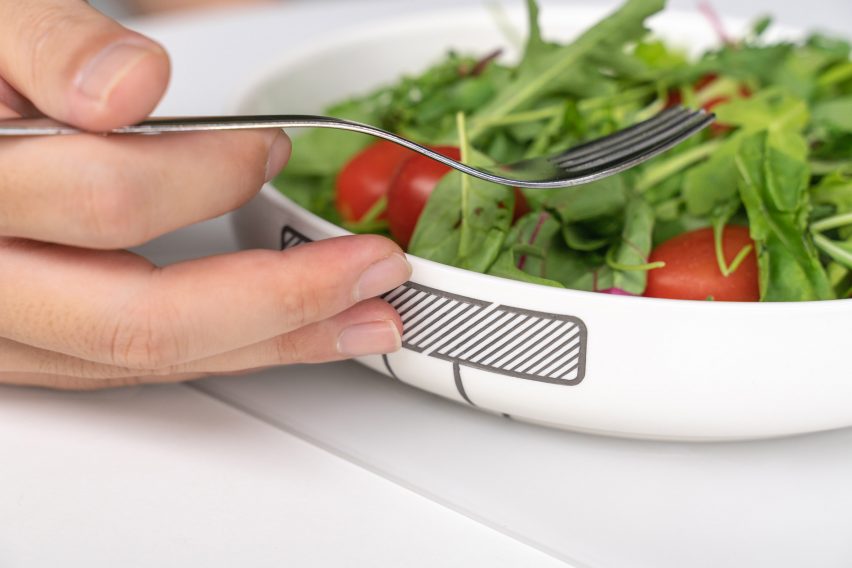
The resulting pieces include a salad bowl with a touch slider that means it can be used as an interface for smart home devices such as music systems or lighting.
The team also created a plate with four electrodes that could monitor eating activity and a plate with a heating circuit that could heat the plate up to 100 degrees Celsius and be used to keep food warm during meal service.
Other pieces in the collection include tiles that can sensor heat or temperature changes and could be used to detect a boiling kettle or wet floors, as well as a moisture-sensing plant pot that could help users keep track of plants' moisture levels.
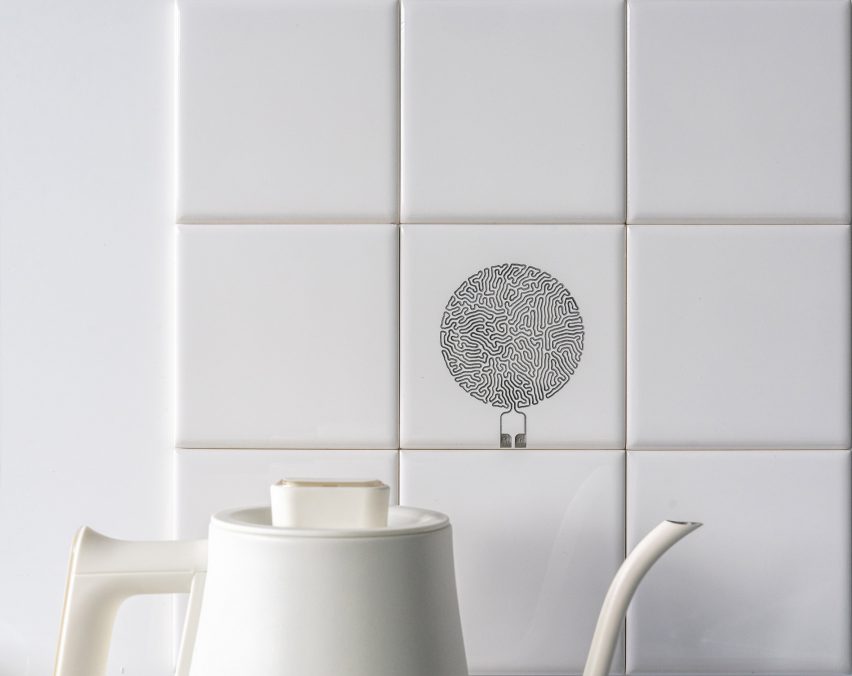
The designers used a resist-blasting technique developed by Tan to make the ceramics conductive.
This saw them mask the ceramic objects with vinyl stickers cut into circuit-design shapes before blasting them with alumide powder, which removes materials from the unmasked parts of the vessel.
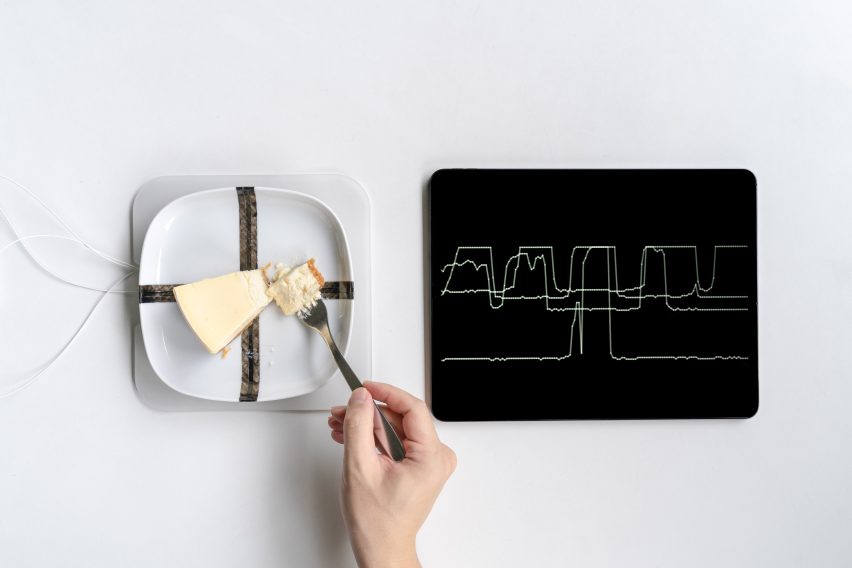
Zheng then manually brushed silver conductive ink onto the sandblasted traces, which was finally scraped off to leave inlaid conductive traces on the ceramic vessel.
"The conductive traces on the ceramic serve as functional sensors such as temperature and moisture sensors and transducers such as heating elements," he said.
"We connect these traces to an external power supply and microcontroller to send and receive electrical signals," he continued.
"To interface the ceramic vessels with these external components, we used a custom placemat with conductive pads."
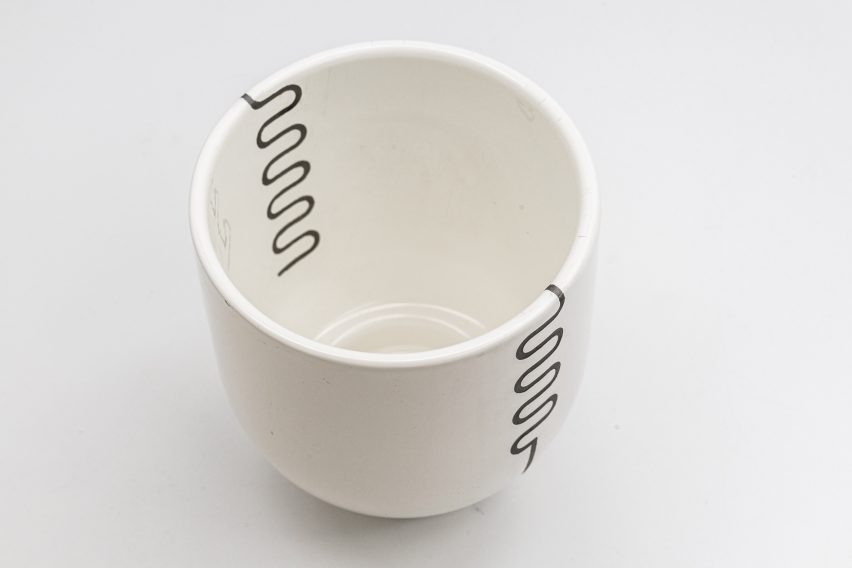
Zheng sourced the ceramics used in the project from both local homeware stores, thrift stores and large retailers such as IKEA, and hopes that it could eventually become a commercial collection.
"Commercialising project outcomes is always on our mind," he said. "Currently, we are focused on researching and developing the approach of incorporating functional circuits onto ceramic objects, as well as testing their durability in terms of everyday use," he added.
The team used resistant-blasting to create the conductive ceramics
There also needs to be more infrastructure development for conductive ceramics to become a regular part of everyday life.
"We are also developing the computing and electronics infrastructure that these objects need in order to function within a broader connected system," Zheng said.
"These are important aspects that we need to resolve in order to translate this concept from prototypes into real-world products."
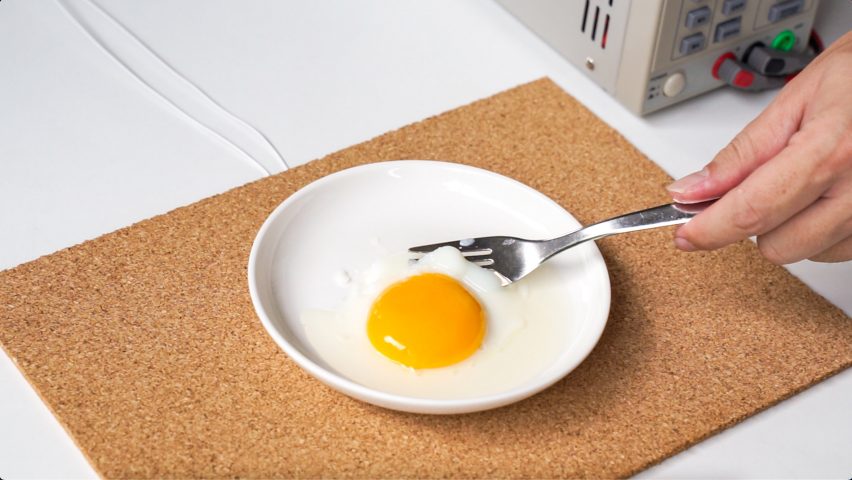
The team is currently also exploring the lifetime of the products, which can be washed by hand as the "recessed conductive traces resist abrasion and wear," Zheng explained.
"We are just starting on the next phase of this research," he added. "In this new phase, we plan to study the effective lifespan of the sensors, as well as explore different conductive inks for their durability. Anecdotally, the objects we have produced are all still working after close to six months."
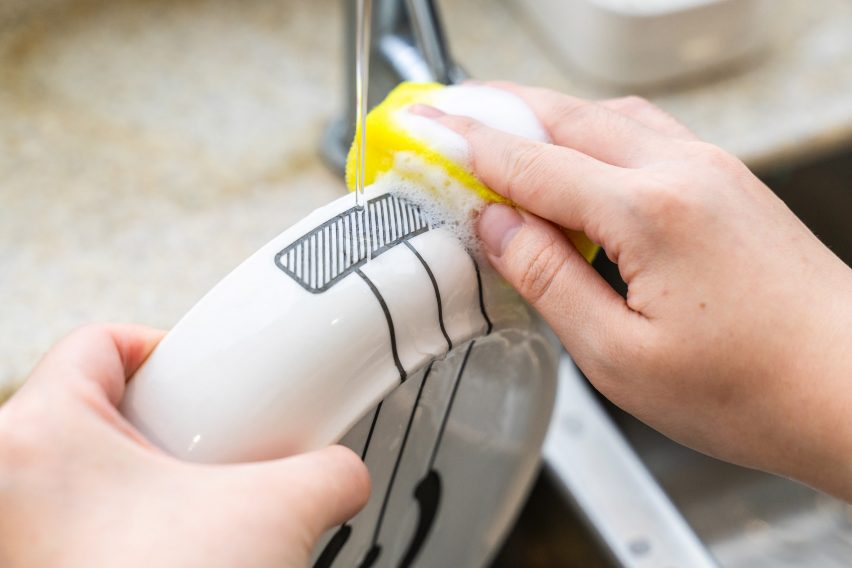
Zheng's previous projects include a clock radio that was turned into a storytelling device and shown as part of the R for Repair exhibition in Singapore.
London studio Bare Conductive has also experimented with conductive design, turning a sheet of paper into a functioning light, while Mui Lab created a plank of wood that functions as a smart home control.
The photography is by Clement Zheng and Han Bo.
Project credits:
Research team: Clement Zheng, Hans Tan, Yen Ching-Chiuan, Han Bo, Liu Xin, Serene Tan, Travis Ong, Wina Nashita (National University of Singapore) and Laura Devendorf (University of Colorado Boulder.)